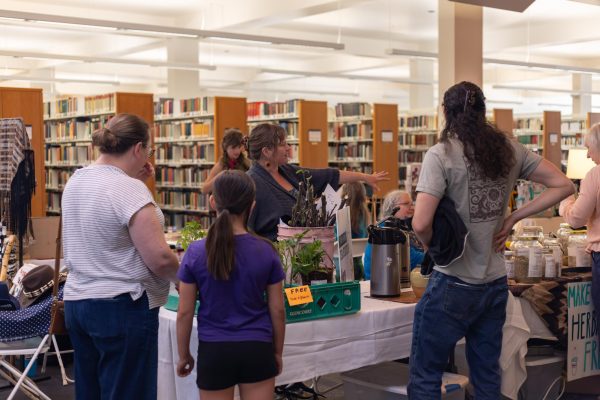‘Sink or swim’ in group projects
Group projects. Some people love them, some people hate them. But chances are, no matter how students feel about it, few will wind their way through college without experiencing at least one.
Instructors see group projects as an effective way to learn, according to accounting professor Mark Michelini.
“I don’t have to be the center of attention,” he said. “Students can learn just as well from one another as they can from an old geezer like me.”
Junior international relations major Luis Rojas said he enjoys group projects.
Workloads are heavy for big topics, he said, and sometimes it’s hard for him to muster the motivation on his own. He finds being accountable to a group helps.
Last year, Rhonda Rickerd, a junior biology major, worked with other students to create a PowerPoint presentation that left her with mixed feelings.
“I was the first to put my information in, but no one else put their sections in until a couple of days before it was due,” she said. “I was stressed that it wouldn’t be finished on time.”
This fall, she’s working on a microbiology assignment with two fellow students. They are creating a video about the effectiveness of vaccines in warding off infectious diseases.
“I got to pick who’s in my group this time, so I feel more confident it will go well,” she said.
Rojas likes the variety of personalities. He also likes getting to know people with views and opinions that differ from his. In the end, he said, “It’s pretty cool putting everyone’s work together.”
Professor Sandra Terra recently assigned a small group research project in her third-year Spanish language class. Students must find a cultural activity to take part in and interview a Spanish speaker.
“I’m sending them out into the community together so they can engage and reflect together,” Terra said.
Gayatree Sarma, a marketing and contemporary management professor, assigns group projects in every class she teaches.
“It imparts a sense of responsibility as well as accountability,” she said. “Business students need the skills and training to be a successful participant in any group setting. I tell them when you work in groups, you sink or swim together.”
Sophomore Keith Rasmussen, an electronic arts major, said that when everyone pitches in, he loves group projects.
In high school, one person often did all the work. “In college,” he said, “I’ve experienced fairness. Everyone does their share.”
Rojas said that the key to a successful project is for everyone to prove reliable. In groups he has worked with, members set up a time for everyone to meet up and divide the workload.
“You should be able to make it work doing your own part,” he said. But sometimes that doesn’t work out and groups have to work around it.
Last semester, sophomore Kendra Manuel participated in a “huge” group project about drugs in the U.S. It could have fallen apart when a member had a last-minute family emergency, but it didn’t.
“She couldn’t complete her part,” Manuel said. “That was understandable, but we needed to present it all.”
The rest of the group responded by stepping up and filling in.
Rasmussen has one bit of advice for his peers: Be aware of how comfortable others are with an assignment.
He recalled an art project that required use of nail guns. His partner was nervous about that, so found other ways to contribute.
“I appreciated that she worked to be sure the project wasn’t a one-person thing,” he said. The finished project, “The Tower,” now reposes outside the Miller Fine Arts Center.
Rojas recommended students welcome group projects.
“They are a cool way to get stuff done,” he said. “They can be stressful — presentations always are — but once you get it done. it’s rewarding to know you all made it work.”


